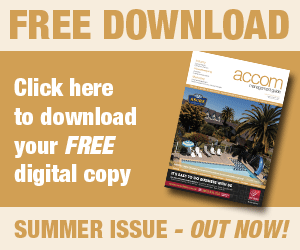Please your guests – protect yourself
- Details
- Published Date
Keeping guests' valuables secure and safe is the innkeeper's responsibility while those goods are on their premises. Guests want to feel safe themselves and know that their belongings are too.
But securing guests' valuables in the business' own safe is labour intensive, subject to staff temptation and untraceable when something does go wrong.
In room safes puts some of the responsibility back onto the guest, eases up on labour, protects staff against being wrongly accused and gives the guest the feeling of being in control of their own property. A win-win situation.
Safes are now becoming a standard inclusion in guest rooms everywhere. The primary motivator behind accommodation providers including safes in their rooms is that it provides the guest with a direct, easy-to-use facility to secure valuables and travel documents within their room. Additionally, the safes reduce the liability of the accommodation provider who is able to offer their guests the security of having items locked by guests' own pre-set password. All activity surrounding the use of the safe can be audited with user ID determiners as well as time and date stamps.
How do you choose an in-room safe?
Probably the first criteria is size – the rule of thumb is choose a safe that will easily accommodate a laptop computer. Anything larger is unlikely to require in-room safe storage. Of course, it must also be able to fit and be secured in the space available with ease of access for the user.
Choose safes that are easy for guests to use. The keypad and display on your safe should be large enough to be read by all guests and visible inside cabinets or wardrobes, lit if necessary. The instructions should be simple, clear, visible and available in multi-languages.
Security depends on the entry password — the international standard is to use either four (10,000 combinations) or six digit code (1,000,000 combinations).
Select a safe featuring 'code-to-close' technology. Most safes lock with the push of a single button or just by closing the door often resulting in guests accidentally locking their safe requiring a staff member to go to the room to override the safe. Code-to-close avoids this.
A shutdown mode prevents openings by repetitive wrong attempts. After several unsuccessful attempts, the safe will enable the shut-down mode for a period of time.
It is essential that a quality safe has capacity to retain sufficient records. When making a purchasing decision, it is advisable to purchase a product that can store up to 500 individual time and date stamped events. This audit trail is the accommodation provider's most crucial asset.
Choose a safe with at least two solid steel, anti-drill rotating bolts, one is not enough. Select a safe with recessed doors for insertion protection, anti-labyrinth mechanism, tamper-proof security screws and bolt-side reinforced mechanism. Quality design should allow the door to open 130°, therefore making it possible to insert a laptop into a small safe box. Top quality safes have hidden hinges so that there are no access points where the door can be jacked open by unauthorised users.
Select a safe that uses standard batteries that are inexpensive and widely available. Battery levels should be easy to check. Look at the number of screws that will have to be removed and replaced for a battery change and look where they are located. For many safes on the market, changing the batteries is a difficult and time-consuming chore.
Select a safe featuring a fixed bolt mechanism in the door rather than the inside cover. In the interest of your engineering department, make sure that the bolt mechanism and its electronic board are contained together in a single replaceable part. Choose a safe with reliable electronics against surge attacks, up to 500,000 volts.
The classic technique to override a locked safe is by using the master code. This is a very dangerous solution because maintaining the security of a master code is nearly impossible. Master code use may result in decreased hotel security and increased hotelier liability.
Select a safe with a 'non-resident' master code. The master code is not in the safe but in the portable programmer. If an employee leaves the hotel, he/she cannot use the master code to open any safe. Make sure that the portable programmer is password protected and that operators are identified by name.
Mechanical key cylinders can be breached by unauthorised users and using a key will defeat the purpose of an audit trail. This in turn reduces the security of your safe plus highlights that the manufacturer may rely on a key in an emergency rather than a secure technological solution available with quality safes.
Further on quality and ease of access in terms of design features, if the safe includes an LED that lights up the interior of the safe as the door is unlocked you will not only please most guests but also ensure that property is not inadvertently left behind.
In-room safes are a most cost-effective way of protecting yourself at the same time as protecting your guests' precious items.


